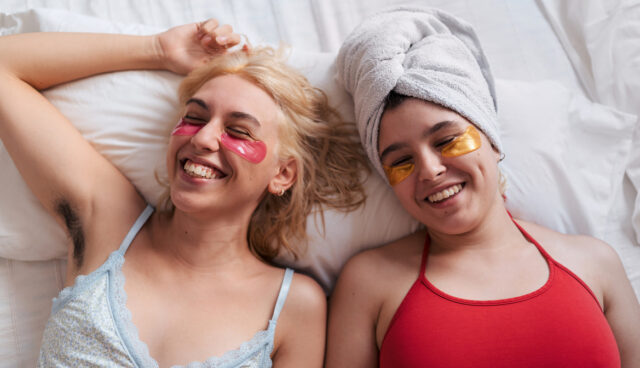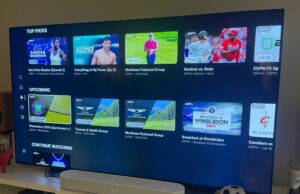Let’s talk patches—the adhesive multitaskers that have revolutionized the beauty shelves. Whether you’re looking to zap zits overnight, combat hair loss, or erase those “I was up too late” under-eye circles, it seems like there is quite literally a patch for everything these days. With so much innovation in the space, we can’t help but wonder: Do these groundbreaking launches signal that patches are edging out our trusty serums and topicals?
Think about it: The technology used to create these patches turns them into expert delivery systems, ensuring a precise formulation of ingredients that targets just the right spot with peak penetration and efficacy. Plus, who doesn’t love instant gratification? The question isn’t whether there’s anything the beauty industry can’t (or won’t) patch, but rather, do experts believe they’re worth the hype?
The rise in patch popularity
Self-care has turned from a trend to a staple for everyone, but particularly younger generations. This is why “the format of patches works extremely well in the beauty and wellness spaces, because they offer a spa-like experience and provide a sense of well-being,” says Jessica Talpos, head of marketing and product development at The Good Patch. It’s a small extra step beyond your daily beauty and wellness routine that can truly make you feel pampered, “Like a micro-spa moment, but more affordable and attainable than the latest beauty device, med spa treatment, or dermatologist visit,” she says.
This appeal has been further amplified by the influence of social media. Gen Z is always online—with three of every four customers in this generation spending time on apps that’ll show them their next favorite brand. Research shows that 30 percent of Gen Z shoppers in the U.S. have purchased a product after seeing it in a YouTube video, and 26 percent have bought something that saw on Instagram. Considering the visible appeal that beauty patches offer, it isn’t a surprise that they’ve become popular with these social media shoppers.
Not only do patches make it easy to show off your self-care practices, but they also offer immediate, selfie-worthy results. Because Gen Z is characterized by shorter attention spans than their predecessors (thanks, TikTok), this mindset leads them to seek out products that work as quickly as possible once they’re applied. What’s more, “Unlike a serum or lotion, patches are associated with being very visually attractive on social media platforms,” explains Sonsoles Gonzalez, founder and CEO of Better Not Younger.
Take Starface, for example. The brand launched in 2019 with colorful, star-shaped acne patches and encouraged people to show them off in public, turning the once-stigmatized act of treating breakouts into a full-on trend (even Justin Bieber hopped on board). What’s more, the patches zap zits in a matter of hours. Co-founders Julie Schott and Brian Bordainick paved the way for beauty patches to become shareable self-care moments—so much so that the brand’s projected revenue this year is $75 million.
Social media marketing has also placed more value on genuine storytelling and technical developments, so the use of advanced materials and technologies—like the hydrogel that’s typically found in patches—has helped this product category secure a modern and innovative image with Gen Z and millennials. “I started Wrinkles Schminkles [a line of wrinkle patches] ten years ago, and until three years ago the core demographic of our wrinkle patches was 35+ but due to social media, the category has garnered huge awareness in the 25+ demographics,” says Gabrielle Requena, the brand’s founder.
What do patches treat?
The basic intention behind beauty patches, “is prolonged exposure to ingredients in a protective layer allows for increased absorbance and effectiveness,” says Michelle Weden, head of innovation at ZitSticka. Though they initially hit the market to treat acne, the category has since expanded to include options for dark spots, wrinkles, and even hair loss.
What sets patches apart from other topical products is their delivery systems. The skin is designed to keep things out, but because patches are structurally similar to the epidermis, they can trick it into accepting active ingredients more effectively. Some patches are made with hydrocolloid material—the same stuff you’d find in blister bandages—which draws excess dirt and fluid out of the skin, while others (particularly those designed for acne) use microdarts to get deep into the skin. Additionally, most beauty patches are infused with active ingredients, like salicylic acid for acne and vitamin C for dark spots.
“The hydrocolloid dressing in and of itself creates a healing environment, and the addition of the active ingredients helps a targeted concern, while also preventing people from picking and worsening the skin,” says Merry Thornton, PA-C, a board-certified physician assistant in dermatology, licensed skincare expert, and founder of Element Medical Aesthetics in New Canaan.
Thanks to the effectiveness of this delivery system, “You don’t need much in terms of actives to see visible results,” says Krupa Koestline, clean cosmetic chemist and founder of KKT Consultants. “Because you are applying these actives straight to the affected area, the concentration that the affected area gets exposed to is comparable and sometimes much higher than if you would use a cream or serum.”
What’s more, because patches act as occlusive (aka seal ingredients into the skin), their ingredients are in close contact with the treatment area for longer, so the exposure is much higher than what you’d get with a serum or topical ointment. “Some actives or humectants can evaporate before the skin has fully absorbed them,” says Alex Padgett, cosmetic chemist and co-founder of Educated Mess Skincare. “Vitamin C, for example, is unstable in the presence of UV. So if you apply a vitamin C serum that hasn’t fully absorbed, some of the actives could be degrading while it sits on the skin, whereas patches prevent this.”
When selecting a patch, it’s important to pay attention to its shape and adhesive “The shape plays an important role in the patch’s ability to adhere to the targeted area it’s treating. If the shape hasn’t been made to last on rounded facial features, it’ll lift or slip off when sleeping and compromise the results,” says Requena. “It’s ideal to look for patches that use silicone medical grade adhesive compared to latex, which is a common allergen for a large percentage of the population.”
It’s worth noting that studies around patches have primarily been conducted on small sample sizes, so more research needs to be done to confirm that they can truly compete with traditional topicals. However, in the next decade, Koestline notes that it’s possible that “wearable patches will be comparable or better than their counterparts from a scientific standpoint.”
How brands have harnessed technology into their patches
For acne
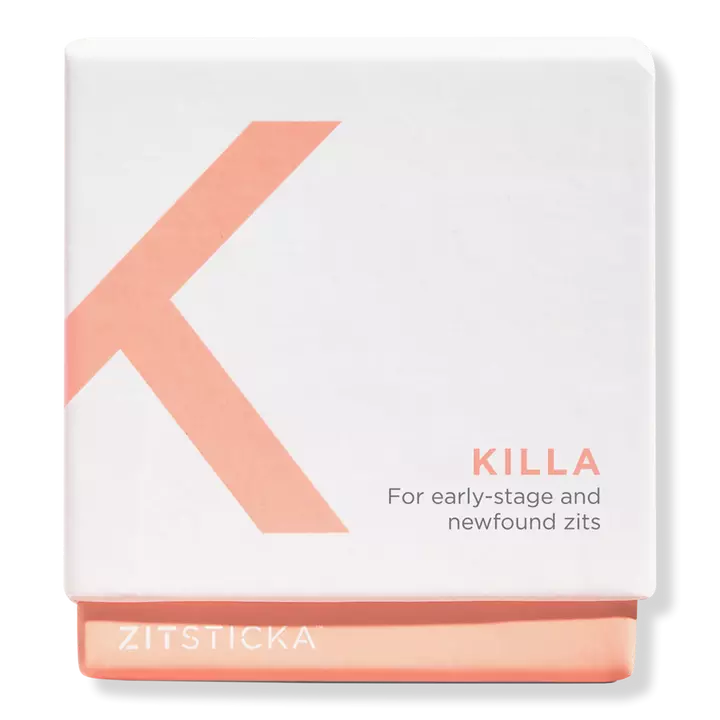
ZitSticka, KILLA Kit Deep Zit Microdart Patch — $15.00
Zitsticka’s patches use proprietary Microdart Technology that features, “dissolving microdarts that are one-third the thickness of a human hair, to painlessly but effectively deliver efficacious ingredients deep into the skin barrier while not harming the skin,” says Weden. They’re infused with salicylic acid, which dives down deep into the pores to clear dirt and debris; niacinamide, which calms skin; hyaluronic acid to replenish hydration; and peptides to halt the progression of a pimple.
For wrinkles

Wrinkles Schminkles, Forehead Wrinkle Patches (2-Pack) — $25.00
Wrinkles Schminkles relies on harnessing the power of medical-grade silicone to tackle fine lines and wrinkles. Silicone is known to provide occlusion to trap actives onto skin and encourage absorption rather than evaporation. According to Requena, the brand’s patches target wrinkles in three ways:
- Compression: Holds the skin taut so it can’t crease and wrinkles can’t form
- Circulation: Stimulates blood flow, which helps to regulate collagen, strengthen the skin, and carry away free radicals from working cells.
- Hydration: Forms an occlusive layer over the skin creating a micro-climate of hydration. Moisture is drawn up to the skin’s surface and locked in between the skin and the patch. In a matter of hours, the skin is visibly hydrated and lines and wrinkles visibly refined.
For dark spots
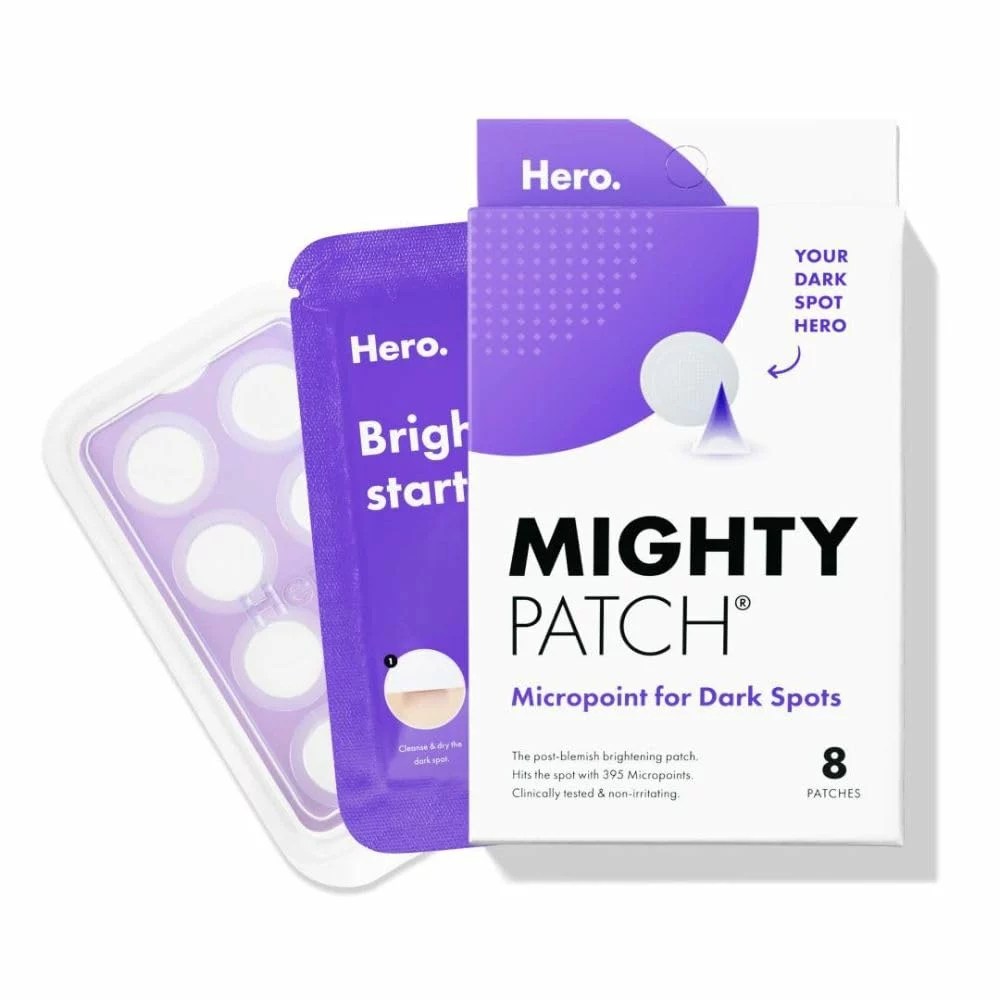
Hero Cosmetics, Mighty Patch Micropoint for Dark Spots — $13.00
Dark spot patches are specifically designed to diminish the post-inflammatory pigmentation or hyperpigmentation that’s left over from a zit. “Dark spot-correcting patches can be beneficial in delivering proven brightening ingredients to a targeted treatment area,” says Marnie Nussbaum, MD, a board-certified dermatologist based in New York City. While she notes that these products won’t do much for chronic dark spots or melasma (you likely need an in-office laser treatment to fade those), they can help with acne scarring and mild-to-moderate discoloration.
These Hero Cosmetics patches (which come with rave reviews across the Internet) include four heavy-hitters for treating dark spots—niacinamide, tranexamic acid, vitamin C, and licorice root—which are delivered to the skin via microdarts.
For hair loss
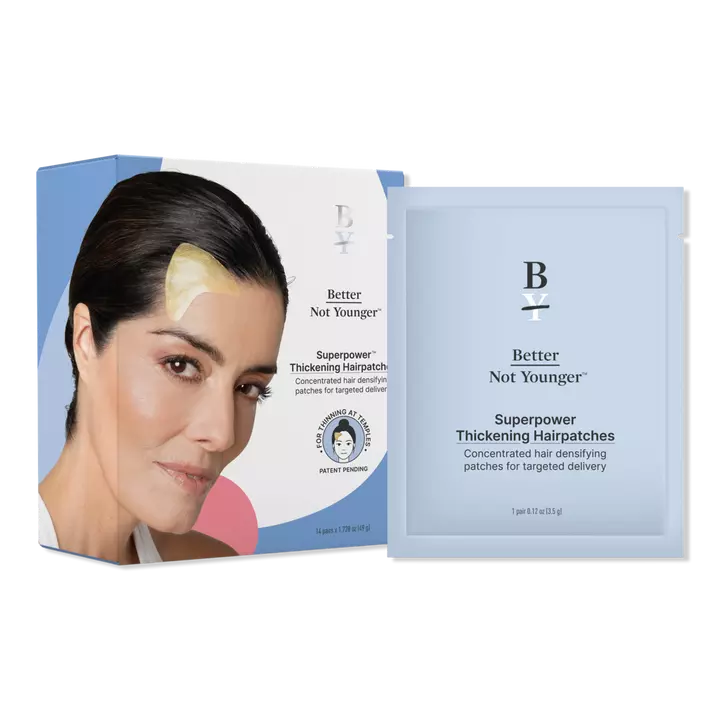
Better Not Younger, Superpower Thickening Hairpatches — $79.00
Better Not Younger’s Superpower™ Thickening Hairpatches employ hydrogel technology to address thinning hairlines and temples. “This innovative approach enhances ingredient penetration for denser, thicker-looking hair,” says Gonzalez. “Infused with proven ingredients like Capixyl™, Red Ginseng, and Centella Asiatica, to help stimulate follicles, strengthen strands, and nourish the scalp for transformative results.”
This is a hair loss game-changer, because though women most commonly experience loss around their hairline and temples, they often forget to apply treatments to these areas. “Better Not Younger has discovered the follicles in those areas are still well and can be reinvigorated, so they designed their hydrogel Superpower™ Thickening Hairpatches to adhere comfortably to the scalp and hair,” says Gonzalez. “This balanced texture allows the patches to remain in place, delivering concentrated ingredients directly to the intended areas—the hairline and temples for hair regrowth.”
The likelihood of hair loss patches working is promising, because the hydrogel technology releases “peptides and proteins, vitamins, essential oils and saw palmetto, which helps block DHT, a hormone associated with hair loss,” explains Thornton. The brand tested the patches in a clinical trial that included women over 40 with hair thinning at their hairline or temples. “Out of the study, 61 percent of women saw increased baby hairs on the applied area after using every other day for a 12-week period. With daily usage, the results were even better, with 78 percent of women saying they saw new hair growth after 12 weeks. These results highlight the effectiveness of the patches in promoting denser, thicker-looking hair,” says Gonzalez.
For under-eyes
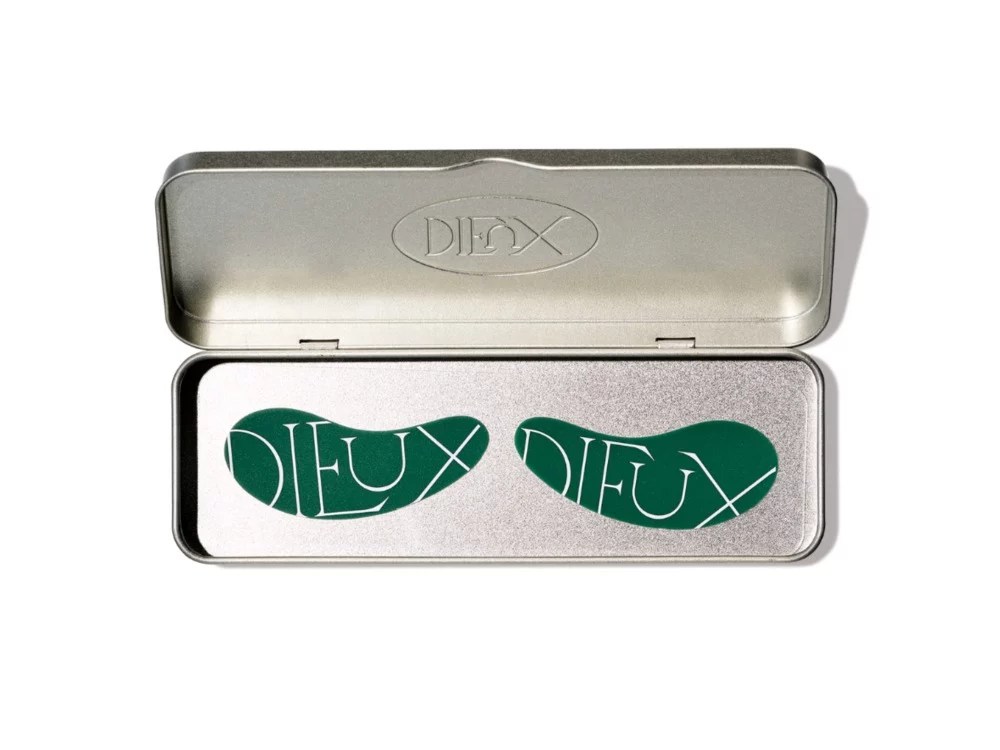
Dieux Skin, Forever Eye Mask — $25.00
There are plenty of effective under-eye patches on the market (you can shop some Well+Good-approved options here, here, and here), but most only target one or two concerns at most. Dieux Skin touts this reusable set as “the last eye mask you’ll ever need,” and that proclamation holds—and likely explains why these patches have gone wildly viral on social media. Instead of coming to you infused with active ingredients, they’re designed to be used with whatever products you’ve already got on hand—so if you wake up with puffiness, you can use them with caffeine eye cream; if you’ve got dark circles, you can pair them with your vitamin C serum; and if you’re dealing with fine lines and wrinkles, you can top them with retinol cream. When you’re done, simply rinse them off and stick them back into the case until the next time you need them.
For multiple concerns
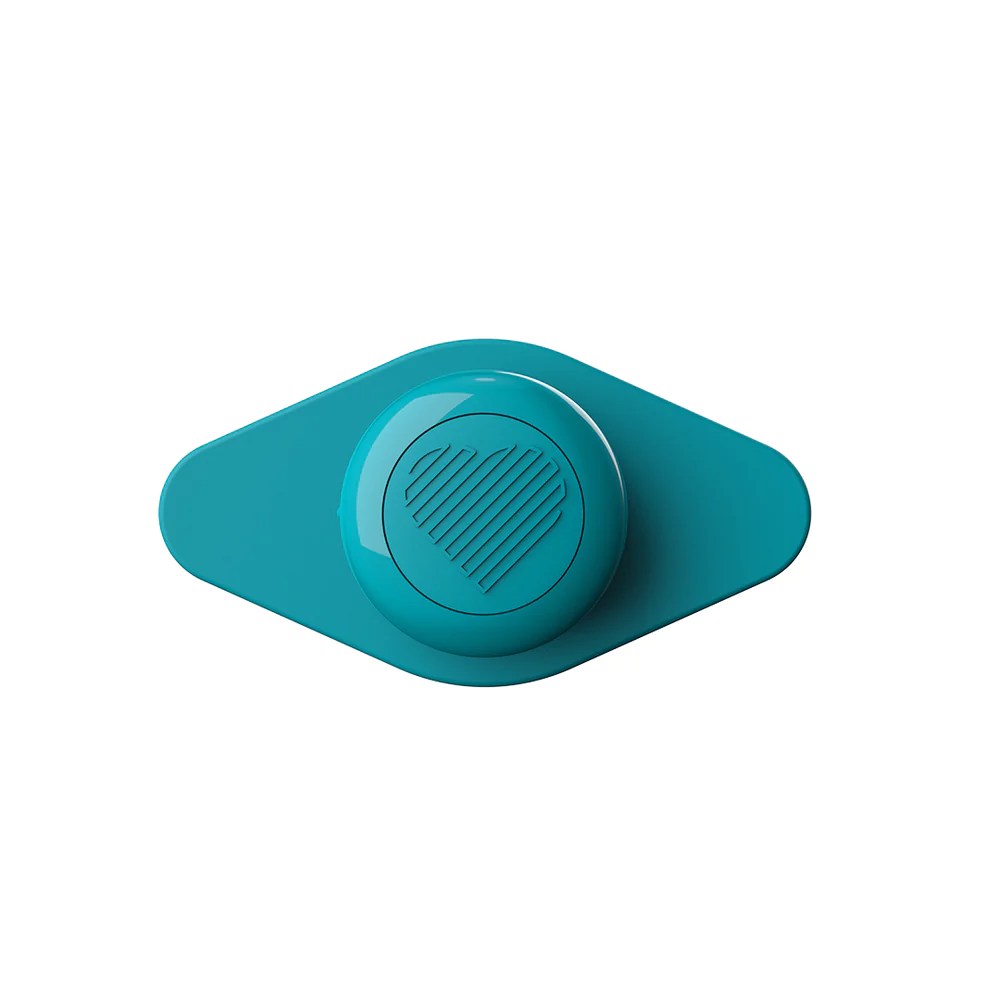
Riki Loves Riki, Riki Miracle — $105.00
Riki Loves Riki has found its own unique way to embed beloved skincare tech—blue and red light therapy—into the new, FDA-cleared Miracle LED Patch. “The patches are capable of addressing specific skin-care concerns like acne-causing bacteria, spot treatments, redness, and scarring while also boosting collagen, tightening skin through phototherapy, a non-invasive treatment that utilizes light wavelengths to stimulate cellular processes in the skin,” says Wanchen Kaiser, the brand’s co-founder and CMO.
What’s next for beauty patches
Patches are just a scroll away from being a staple in everyone’s beauty routine. “As the holistic beauty consumer evolves, we see beauty patches evolving along with them, helping to not only solve skin-care problems but also the root cause of them—whether that be stress, PMS pain, lack of sleep, or something else,” says Talpos.
Our editors independently select these products. Making a purchase through our links may earn Well+Good a commission.

